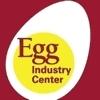Explore all the information on
Poultry egg quality
Egg quality defines those characteristics of an egg that affect consumer acceptability and preference. Components of quality include shell quality and interior egg quality for shell eggs, and interior egg quality for further processed eggs. The quality of the egg once it is laid cannot be improved. Hence, its maintenance is mostly a preventive process. Egg quality is influenced by several factors including rearing, temperature, humidity, handling, storage, and egg age. Shell quality: There are five major classes of shell defects: integrity, texture, shape, color, and cleanliness. Internal egg quality involves functional, aesthetic and microbiological properties of the egg yolk and albumen. The proportions of components for fresh egg are 32% yolk, 58% albumen and 10% shell. Regarding exterior egg quality, the shell of each egg should be smooth, clean and free of cracks. The eggs should be uniform in colour, size and shape.
The International Egg Nutrition Centre (IENC) has announced the formation of the Global Egg Nutrition Expert Group which will focus on developing, collating and optimising research on the nutritional value of eggs, to ensure the information is readily available to all.
The group, which has been formed in line with two of the UN Sustainable Development Goals, Zero Hunger, and Good Health and Wellbeing, will look to collate balanced information on the nutritional impact of the egg....
Comments : 0
Recommendations: 0
Biosecurity is a major consideration for egg farmers across the world, and can be regarded as the ecosystem of measures capable of preventing the spread of harmful organisms to animals to reduce the risk of transmission of infectious diseases. Strong biosecurity requires all preventative measures to work collaboratively, from vaccines to physical barriers, hygiene practices, personal protective equipment (PPE) and bio-monitoring. It is essential that all elements are working in sync, with no...
Comments : 0
Recommendations: 0
METHPLUS® is a nutraceutical product that acts in feeds as adjuvant to synthetic methionine (from Latin, adiuvare: to aid). Thanks to its ingredients based on plant extracts, seaweed and legume, helps to enhance remethylating path of the methionine cycle. METHPLUS® was developed thanks to European funds, over a period of 3 years, and its effectiveness has been demonstrated in the field in numerous countries with different diets, different climatic factors and management,...
Comments : 4
Recommendations: 3
1. Introduction One of the main goals of free-range egg production is to optimise laying performance and egg quality while supporting hen health and welfare. However, opportunities provided in the free-range system allow for the expression of a variety of behaviours, interactions and physical experiences (e.g., being exposed to uncontrolled environmental conditions) which may impact hen health, welfare, and survival [1–3]. For example, free-range flocks are frequently...
Comments : 0
Recommendations: 1
.jpg&w=3840&q=75)

Introducing Afla-V ONE: Fast, precise aflatoxin detection for complete feeds and pet foods
Suggested link
Introduction The genetic make up of a layer variety determines its range of possible performance results. Within this genetically defined range, we can alter the production characteristics through our management systems to optimize these traits which are most profitable for our market. Based on International market levels eggs are sold on the basis of egg size. Much preference is given to egg size, whereas in Indian markets the eggs are not...
Comments : 37
Recommendations: 3
The laying cycle of a chicken flock usually covers a span of about 12 months. Egg production begins when the birds reach about 18-22 weeks of age, depending on the breed and season. Flock production rises sharply and reaches a peak of about 90%, 6-8 weeks later. Production then gradually declines to about 65% after 12 months of lay. A typical production curve for a laying flock, showing changes in the level of egg production and in egg weight, over time, is given in Figure 1. ...
Comments : 2
Recommendations: 3


Current market review and perspective of Florfenicol, Tilmicocin, vitamins and aminoacids
Suggested link
Mike Persia (Virginia Tech) talked about body composition and the advantages of this technology when evaluating energy status, during IPPE 2020 in Atlanta, USA....
Comments : 7
Recommendations: 2
by Sam Shafer
When humans domesticate and breed an animal, they tend to select for a very specific trait. In laying hens, artificial selection for high egg production has led to hens that can produce 320 eggs a year. But could artificial selection have unintentionally altered hen brain morphology?
In a new study, published in the July issue of Poultry...
Comments : 0
Recommendations: 0
Introduction Earlier, it was hypothesized that growth promoting effects of Antimicrobial Growth Promoters (AGPs) in poultry feed are attributed to their non-antibiotic anti-inflammatory...
Comments : 1
Recommendations: 3
I'm interested in knowing what to feed my layer chickens so that they lay fertile eggs. ...
Comments : 1
Recommendations: 0
Introduction There is increasing consumer interest in healthier (designer) eggs, nutritionally enhanced and value added with enrichment of omega-3 fatty acids and Docosahexaenoic acid (DHA) along with reduced level of cholesterol, fat, saturated and trans-fatty acids in egg. Eggs are not only a highly nutritious food, but also a rich source of diverse bioactive components including nutraceuticals. In present scenario consumers are much conscious about their health and their...
Comments : 1
Recommendations: 2
1. Introduction Small-scale poultry production is a very common practice in rural households around the world, and several studies have evidenced that these production systems have played and continue to play an important domestic socio-economic role in many poor rural households [1,2]. Backyard poultry production systems (BPS) are the most popular systems within small-scale poultry production, where animals are usually kept without proper disease prevention or control...
Comments : 0
Recommendations: 0
PSA interviewed Deana Jones with the USDA Agricultural Research Service to discuss egg safety and storage. We also take a look at "cracking" some egg myths. Let's Squawk About It is a monthly interview segment by the Poultry Science Association....
Comments : 0
Recommendations: 2
Maarten De Gussem (Vetworks) talked about the lessons learned in Europe by using free range production, during APA Egg Congress in Sao Paulo, Brazil....
Comments : 1
Recommendations: 5
Yolk color was determined to further evaluate the level of raw materials-containing xanthophylls which affect the yolk color pigmentation. In this photo, the upper left can be considered having 14 as its color grade while the other one, 12.5 as its color grade. Yolk color doesn't imply nutritive value although, there are differences in micronutrients moreover, an egg is an egg after all....
Comments : 0
Recommendations: 0
Amino acid pullet nutrition affects growth and development and it is important to evaluate potential effects on egg traits. One experiment was conducted to determine the effects of four amino acid (AA) dietary levels fed to broiler breeder pullets during the rearing phase from 5 to 24wk of age on egg characteristics. A total of 1,360 Cobb-500 slow-feathering pullets were placed in 16 floor pens (85/pen). Up to 4wk all pullets were fed one starter diet in crumbles and after 29d of age fed...
Comments : 5
Recommendations: 1
ABSTRACT
Improving productivity, reducing feed cost or increasing economic efficiency are main challenges in laying hen farms. Thus, the present experiment was conducted to study the effect of different levels of lysine and Total Sulfur Amino Acids (TSAA) on productive performance, egg quality and economical evaluation of Lohmann Brown laying hens . A total number of 144 hens...
Comments : 4
Recommendations: 1
INTRODUCTION Consumer demand for eggs in North America has been steadily increasing, with retail growth of 6% in 2018 in Canada, up from the 4.1% growth seen in 2017 (Egg Farmers of Canada, 2017, 2018). In the United States, 2018 per capita egg consumption increased by 2.1% over 2017 (USDA, 2019). It is therefore critical to establish suitable nutritional and management strategies that accommodate these increased production goals, while accounting for the economic, social, and...
Comments : 2
Recommendations: 0
1. Introduction Ancestors of modern poultry lived in social groups of 20 to 30 chickens. In current non-cage systems, the flock sizes are much larger. Laying hens are not able to remember or recognize all flock mates in such systems and there is complete absence of social hierarchy [1]. This results in feather pecking, which is one of the greatest challenges in commercial laying hen husbandry [2]. At present, non-cage systems are prevalent in Europe and North America....
Comments : 0
Recommendations: 0
.jpg&w=3840&q=75)







.jpg&w=3840&q=75)


.mp4&w=3840&q=75)
























